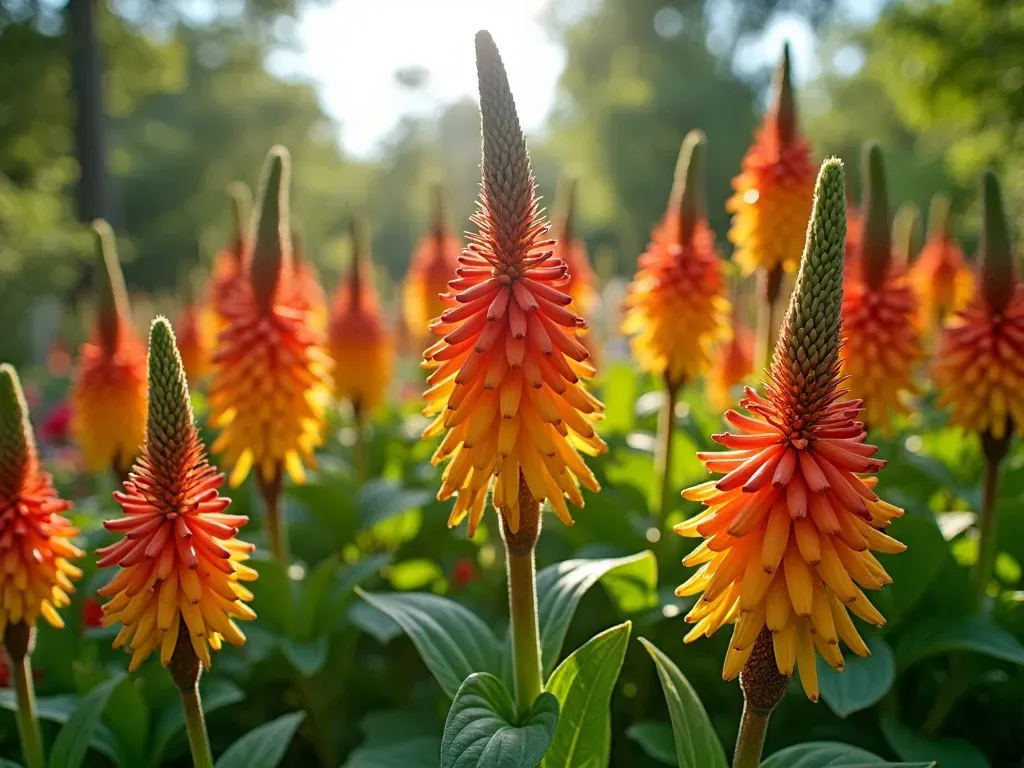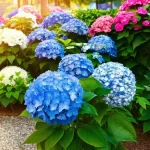Cone-shaped flowers, known for their distinctive and captivating shape, offer a unique aesthetic appeal to gardens and landscapes. These blooms can add character and charm to any floral arrangement or outdoor setting. From vibrant purples to soft whites, some popular varieties include purple cone shaped flowers, white cone shaped flowers, and even the less common red cone shaped flower. This article delves into the fascinating world of cone-shaped flowers, exploring various types, their characteristics, and how to cultivate them in your garden.
Characteristics of Cone Shaped Flowers
Cone-shaped flowers are characterized by their three-dimensional blooms that taper from the base to the tip like a cone. This unique design not only enhances their beauty but also helps attract pollinators, making them a favorite among gardeners. They can vary significantly in size, color, and shape, with options ranging from bushy shrubs adorned with delicate blooms to tall stems crowned with large, eye-catching flowers.
Key Varieties of Cone Shaped Flowers
| Flower Type | Description | Color Options |
|---|---|---|
| Purple Coneflower | The Echinacea purpurea is the most well-known type, often found in gardens. | Purple, Pink |
| White Coneflower | A variant of the coneflower, with stunning white blooms. | White |
| Red Coneflower | A rarer type, prized for its bright red appearance. | Red |
| Cone-shaped Hydrangeas | Known for their large, conical clusters of flowers. | White, Blue, Pink |
| Fuzzy Cone-shaped Flowers | Flowers like the Fuzzy Aster, known for their soft texture. | Purple, Yellow |
Fascinating Facts About Cone Shaped Flowers
- Pollinator Friendly: Many cone-shaped flowers, such as Echinacea, are known to attract bees and butterflies.
- Long Blooming Period: They often bloom in mid-summer and can last until the first frost, offering a long period of vibrant color.
- Medicinal Uses: Echinacea is not only a garden favorite but is also widely used in herbal medicine for its immune-boosting properties.
Popular Cone Shaped Flower Species
-
Echinacea (Coneflower):
- Description: Echinacea is a group of flowering plants in the daisy family, Asteraceae. Known for its drooping petals and large central cones, it comes in various colors, primarily purple and white.
- Growing Conditions: Prefers well-drained soil and full sun. Drought-resistant once established.
- Height: Typically grows between 2-4 feet tall.
-
Cylindrical Flowering Plants:
- Description: These are lesser-known plants but provide stunning cone-like flowers. They are often used in garden borders or as accent plants.
- Color Variations: Can be found in shades of purple, pink, and white.
-
hydrangea Paniculata:
- Description: Known for its large, conical clusters of flowers, it can create a dramatic effect in any garden.
- Growing Conditions: Thrives in a variety of soils and prefers partial shade to full sun.
- Height: Can reach up to 10 feet tall.
FAQs About Cone Shaped Flowers
Q1: How do I care for cone shaped flowers?
A: Cone shaped flowers usually require full sun, well-drained soil, and regular watering, especially during dry spells. Deadheading spent blooms can encourage further flowering.
Q2: When is the best time to plant cone shaped flowers?
A: The best time to plant most cone shaped flowers is in the spring or fall when the temperatures are mild.
Q3: What pests should I watch out for?
A: Common pests include aphids, slugs, and caterpillars. Regularly inspect your flowers and treat any infestations promptly.
Q4: Can I grow cone shaped flowers in containers?
A: Yes, many cone shaped flowers can be grown in containers, provided they have sufficient space for their root systems and proper drainage.
Q5: Are cone shaped flowers suitable for cut arrangements?
A: Absolutely! Cone shaped flowers make excellent cut flowers for arrangements due to their unique shape and longevity.
Cultivating Cone Shaped Flowers
Growing cone shaped flowers can be a rewarding experience. Here are some steps and tips to help you successfully cultivate these beautiful blooms:
-
Choose the Right Variety: Depending on your garden’s climate and soil, select a variety that will thrive in those conditions.
-
Soil Preparation: Ensure you have well-drained soil. Adding organic matter can improve soil structure and fertility.
-
Planting: Space your plants adequately; typically, 18-24 inches apart is suitable, allowing them room to grow and air to circulate.
-
Watering: Regular watering ensures they establish well, particularly during the early growth stages. However, avoid waterlogging.
-
Fertilization: Use a balanced fertilizer in the spring to support robust growth. Too much fertilizer can lead to lush foliage but fewer flowers.
-
Mulching: A layer of mulch can help retain soil moisture, suppress weeds, and maintain temperature.
-
Pruning: Deadheading spent blooms can lead to additional flowering and longer bloom periods.
Aesthetic Uses of Cone Shaped Flowers
Cone shaped flowers can be utilized in various ways to enhance outdoor spaces:
- Border Planting: Their striking shapes and colors make them perfect for border planting in gardens.
- Mixed Flower Beds: Combine cone shaped flowers with Other complementary blooms for a diverse and vibrant display.
- Accents in Landscaping: Use taller varieties as focal points or as backdrop plants to create depth in garden designs.
Conclusion
Cone-shaped flowers add a unique visual element to gardens and outdoor spaces. Whether it’s the vibrant purple coneflower or the classic white variant, these blooms have much to offer in terms of visual appeal and ease of cultivation. With the right care and conditions, you can create stunning displays in your garden that draw in pollinators and delight the eye.

For further reading on the types of cone-shaped flowers and how to care for them, check out Epic Gardening’s Guide.


